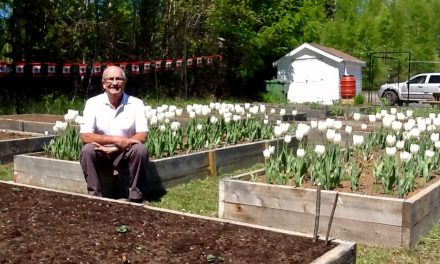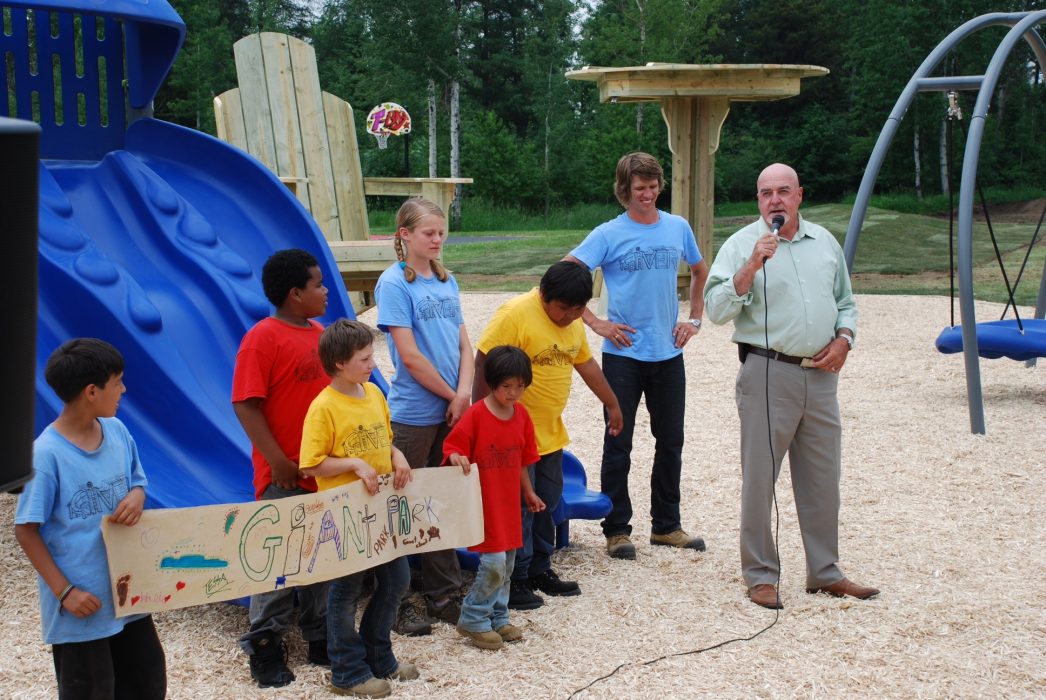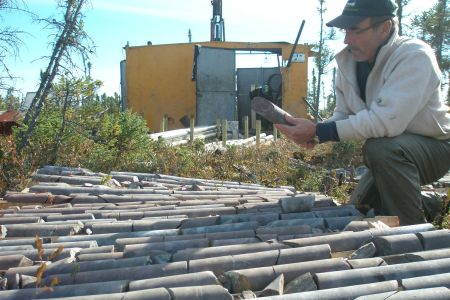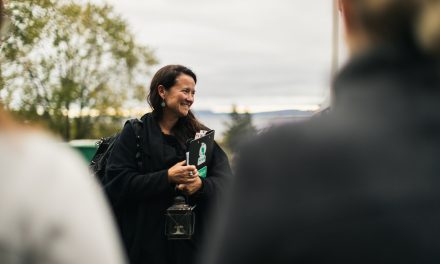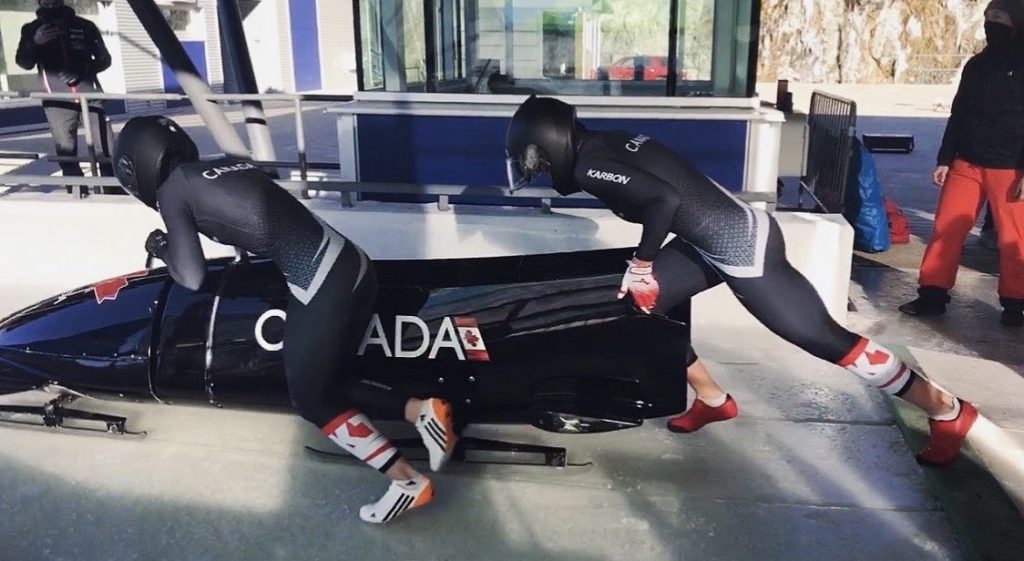
The Road From Thunder Bay Firefighter to Canada’s National Bobsled Team
By Bonnie Schiedel
“It’s kind of like a roller coaster, and kind of like a water slide, but you can’t see what’s happening,” says Thunder Bay’s Stephanie Drost, when asked what it feels like to do a bobsled run. “The gravitational force is quite extreme. We hit speeds of 145 to 150 kilometers…it’s a crazy feeling. It feels like you’re getting smushed into the bottom of the sled, and you can’t fight it. You just gotta let it happen.” When Drost, 27, decided to apply for Canada’s national bobsled team, she had no prior experience with a bobsled, of course. Unlike skating or skiing, it’s a winter sport that few have the chance to try. Still, she was looking for a challenge.
Drost is no stranger to challenges. As a teenager and young adult, she raced provincially and nationally in nordic skiing before an old elbow injury meant she had to take a break from competition. It was then that she started working summers as a forest firefighter with the Ministry of Natural Resources and Forestry (MNRF), and soon decided to apply for a position with Thunder Bay Fire Rescue. To prepare, she trained CrossFit-style, six days a week for a couple of hours a day for several months. She passed both the written and physical tests first time out (and by the way, the requirements are the same for both men and women). In 2016, she and Ceilidh Boyd, a fellow MNRF firefighter, became the first female firefighters hired by the City.

It was Drost’s mom Jennifer and sister Alanna that first suggested she look into the national bobsled team. “I’m a very competitive person, so I need that in my life,” she says. “Firefighting was a big goal of mine and after having completed that, I missed having a big goal to train for and having that competitive outlet. I wondered if there was anything that I could get into, especially a little bit later in life, and still be successful at.” Drost hired Bobby Kwasny as a coach and trained hard for a year, and then in fall 2020, after taking a leave from the fire department, went to Calgary for the bobsled “combine”—a series of physical tests to evaluate power, speed, and strength. She was one of a handful of men and women that made it through those tests and went on to Whistler, BC, to be part of the development team. Some, but not all of the development team will go on to compete at events like the World Cup and the 2022 Winter Olympics. There are nine female brakemen competing for three team positions and three spares.
Drost’s position is brakeman, and she is matched up with a pilot in a two-person sled. To be a good brakeman, “you need to be big and powerful and really fast. So me being taller helped me in that area” (Drost is 6’1”). As you hurtle down the icy run, you feel different pressures from the gravitational force, she says. “After you’ve done several runs, you kind of get a feeling for how to anticipate what’s coming next.” Pulling the brake feels like “you’re doing a huge deadlift,” she says, adding that it’s important to time it well so the sled stops properly.
While it’s hard work and competition is fierce, Drost is having a good time. “It is a great team and we all get along super well. It’s a lot of fun.”


